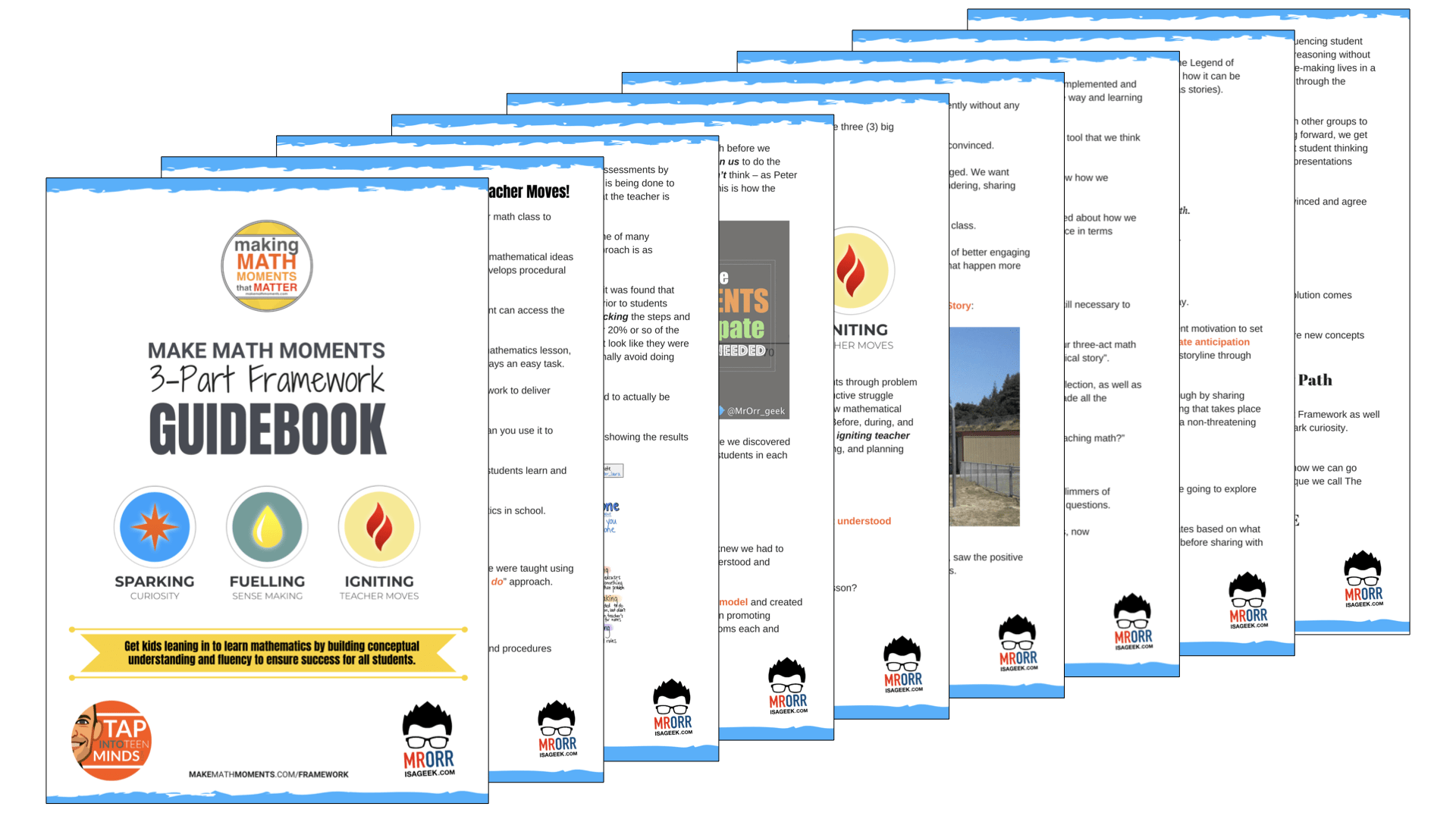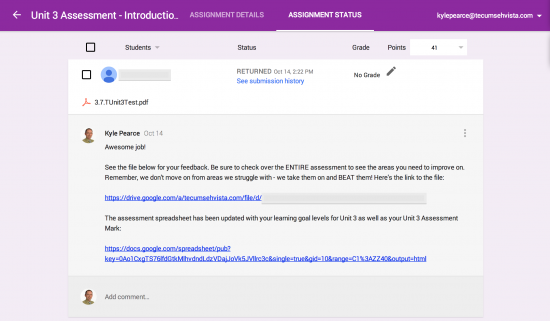Teacher-Student Relationship, Growth Mindset and Google Classroom Help To Make It Work
I just received an email from my good friend and colleague, Jay Lynn from the Student Success Team in my district. He’ll be working with some math teachers later this week and was curious regarding my use of descriptive feedback in math. With his expertise in effective teaching strategies from an English/literacy background and with my focus on mathematics, we tend to lean on each other for when we are supporting teachers outside of our subject areas.
Over the past couple years, I have been doing quite a bit of experimenting and have found that sometimes less is often better than a lot all at once. I’ve also been using a lot of growth mindset descriptors that encourage students to act on the areas they haven’t mastered “yet,” while celebrating the hard work and dedication they have applied to the areas they are excelling in. As much as I might want to say “pick up your socks and get working” to students who don’t seem to be putting in a full effort, I try my best to keep it positive with a focus on what they will accomplish and how I can help them get there.
The frequency of my feedback has increased to every couple of days. I collect a question that allows students to demonstrate a few learning goals and I then give them some actionable feedback, even if it is really great work. This keeps the marking quick and feedback short enough for both the teacher and the student to benefit. Last year, when I really tried to use descriptive feedback to help improve student achievement in my classroom, I found that I was just giving way too much. Not only was I killing myself to get a ton of written feedback to my students as often as I could, the students weren’t improving in the areas outlined. My assumption is that there was too much to read. Often times, students receiving the most feedback were struggling. I can only imagine looking at a book’s worth of feedback would be more discouraging than helpful.
This year, I am noticing that students are following through more often and consistently with the action items I provide in the feedback. Google Classroom has really made the collection of student work easy through the “assignment” feature and also allows for a way to keep feedback accessible and organized for my students via the comment feature inside the assignment.
Something else that I feel has assisted with student follow through on my suggestions through my descriptive feedback has been my focus on developing a better teacher-student relationship with all of my students. I was first introduced to Hattie’s list of effect sizes when I attended one of Jay’s workshops last year and have been really focused on building a strong relationship with each student in my classroom. Even though I have always been known to have a good relationship with students, I have really worked hard at going out of my way to connect with all students regardless of whether they seem engaged in my classroom or not. I am happy to say that I can really see the effects paying off. If descriptive feedback focusing on growth is offered to students while building strong teacher-student relationships, then the combination can be quite powerful.
How are you using descriptive feedback in your classroom? What’s working? What’s not? Would love to hear your thoughts in the comments.
WANT TO LEARN HOW TO TEACH THROUGH TASK?

Share With Your Learning Community:

About Kyle Pearce
I’m Kyle Pearce and I am a former high school math teacher. I’m now the K-12 Mathematics Consultant with the Greater Essex County District School Board, where I uncover creative ways to spark curiosity and fuel sense making in mathematics. Read more.
Read More From The Blog


Hey…. Like you I’ve also come to the conclusion that less is better. I’ve also started to have shorter tests (like 3 questions) but more frequently. I can mark them quicker and get that feedback to them faster, allowing them to fix them up. Our school is also focusing on determination! We find in the applied grades kids give up to easily. Our feedback is guided, like you by growth mindset language…..we are encouraging them to keep going, it’s not quite right yet…..I know you can do it!
Hi Jon,
Love it! I’m still doing “full period tests” at the end of each unit, but know that it isn’t the best approach for my applied learners. I’m doing more frequent assessing (3 or 4 Q’s like you mentioned) throughout the unit, but still do the unit test. EQAO at the end of the year is something that I fear will hit them hard if I don’t expose them to some similar assessments throughout the year.
My goal is to continue with the growth mindset and give multiple opportunities to improve. The test isn’t the only thing that matters – just a learning update.
Maybe we can do some collaborating on this moving forward. Thanks for stopping by.